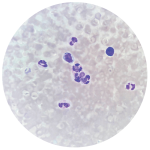
Our goal: Truly personalized treatment for each patient
Konstantin Faraktinov/shutterstock.com
SAN FRANCISCO—Considerable progress has been made in the treatment and management of rheumatoid arthritis (RA) in the past two decades, with rheumatologists now able to manage the effects of this chronic, debilitating condition for most of their patients, according to Ronald van Vollenhoven, MD, director of the Amsterdam Rheumatology and Immunology Center (ARC) in the Netherlands.
“We have come a long way in RA treatment, but not to the place where we can be complacent,” he noted in a presentation at the California Rheumatology Alliance 2016 Medical & Scientific Meeting in May. “We try to treat symptoms and prevent progression to functional loss. Rarely today does an RA patient do outright badly.” More effective treatments in the future may come from combinations of biologic treatments, induction-maintenance strategies and the eventual goal of personalized treatment for every patient.
Dr. van Vollenhoven introduced his discussion of advances in RA treatment with a brief history of clinical research, distinguishing between pharmacy industry-initiated and clinical investigator-initiated clinical trials. He concluded with the promise of the “learning healthcare environment,” an idealized state that will someday collect data, analyze it and feed it back to clinicians. Such an approach, he said, can build in randomized studies by frontline clinicians, informing patients up front and simplifying the clinical trial enrollment process. Rheumatologists collaborating on the care they provide to patients will be able to synthesize such research in new and different ways.

Dr. van Vollenhoven
Dr. van Vollenhoven recently moved from Karolinska University Hospital in Solna, Sweden, back to his native Netherlands to head the Rheumatology and Immunology Center, a research collaboration between Vrije Universiteit Medical Center and the Academic Medical Center of the Universiteit van Amsterdam, which are moving toward a full merger by next January, combined with the community-based rheumatologists of the Reade Foundation, also in Amsterdam.
The new ARC collaborative in Amsterdam has pursued concrete steps for bringing its clinicians together in research and education, he explained in a follow-up interview with The Rheumatologist at the conference. “We are striving to create a true learning healthcare environment where we learn from all the clinical decisions that are being made daily by physicians, anyway. As every doctor knows, every day of their working life, physicians make treatment decisions that aren’t clearly right or wrong, black or white. For many decisions, you have two reasonable alternatives, but you have to choose one because you have to do something,” he explained. “These kinds of choices can be used to inform the future—to find out what therapeutic choices really have advantages or disadvantages and for which patients.”
One Dose Doesn’t Fit All Patients
Clearly, one dose does not fit all with RA, and there is a balancing act involving treatment advances, Dr. van Vollenhoven said. “When we see research comparing traditional treatments, such as methotrexate or triple DMARD (disease-modifying anti-rheumatic drug) therapy with biologic therapies for newly diagnosed RA patients, or even for those who have a genetic disposition and are starting to show symptoms, this is a big choice for us. Do you stick with the traditional therapies—safe, easy and less expensive? If the studies tell us that some do well on traditional medications, but a greater percentage gets better results on the new treatments, we need to weigh our options.”
Rheumatologists are likely to follow a conservative path in their choices, and study results have to be applied to real-life situations. “The treatments that studies suggest are more effective, we know they come with a slightly higher risk of side effects and higher costs. But the cost picture is also changing,” he added, as the manufacture of biologic agents becomes more effective.
“I don’t think we can say any more that the reason we’re not choosing some of these newer therapies is because they’re too new. But we can say we feel there are certain advantages and disadvantages to these drugs, and also to conventional treatments—and we need to balance those considerations. We also need to be honest and say that, right now, cost is a factor in our decisions.” European and American guidelines are not yet recommending that RA patients be treated with biologics as a first-line treatment, he noted.
“But we’re seeing the contours of new treatments that will be more cost-effective,” for example, induction-maintenance therapies and the use of Janus kinase (JAK) inhibitors or other powerful treatments early on, for a limited time, to bring the disease under control as quickly and effectively as possible. “Then you build on it by giving maintenance therapy.” JAK inhibitors, including tofacitinib and baricitinib, target a family of intracellular Tyrosine kinases that transduce cytokine-mediated signals in the cells.
Currently, there are nine originator biologicals approved by the FDA for treating RA, plus one biosimilar, although three biosimilars for RA are used in Europe. Collectively, they have five distinct mechanisms of action, and more are in the pipeline, Dr. van Vollenhoven said.1,2
Other new strategies highlighted in his presentation include neuroimmunomodulation of the inflammatory response, which has been tested in the form of an implantable device in the neck to stimulate the vagal nerve.3 “It’s a complicated procedure, but some patients did well on it,” he said.
Fluorescent optical imaging can be used to detect subclinical synovitis, an inflammation of the joint lining, a primary characteristic of inflammatory arthritis, according to a study published last year.4 Ultrasound can also help support diagnostics. A multi-biomarker disease activity (MBDA) score procedure has been approved by the Food and Drug Administration to show level of disease activity.
In a new study at Karolinska in Sweden, it was found that for patients who have clinically active disease but a low MBDA, triple therapy may be better than anti-tumor necrosis factor, he said.
Clearly, one dose does not fit all with RA, & there is a balancing act involving treatment advances. —Dr. van Vollenhoven
Personalized Care
“Doesn’t it strike you as odd that all patients get the same dose of these new drugs, whether they are large or small?” Dr. van Vollenhoven asked. “What would a personalized dose offer? Dosages based on clinical trials give you an average approach, but once a drug is approved, the manufacturer doesn’t have a motivation to keep studying different dosages.”
A biomarker panel might someday tell the rheumatologist which of two treatment choices is best for each individual patient. “Today, we can personalize treatment to a certain degree, but not that much,” he said. “I think we have to be honest that we are still quite far from our goal of having truly personalized treatment for each patient.”
How far away is it? “They keep saying it’s about five years away. I’m going to be careful about saying more than that. But in medical research some things happen in leaps and bounds. With so much research going on in this area, maybe a breakthrough is coming.”
Larry Beresford is an Oakland, Calif.-based freelance medical journalist.
References
- Van Vollenhoven RF. Unresolved issues in biologic therapy for rheumatoid arthritis. Nat Rev Rheumatol. 2011 Apr;7(4):205–215.
- Van Vollenhoven RF. Treatment of rheumatoid arthritis: State of the art 2009. Nat Rev Rheumatol. 2009 Oct;5(10):531–541.
- Pavlov VA, Tracey KJ. Neural circuitry and immunity. Immunol Res. 2015 Dec;63(1–3):38–57.
- Werner SG, Langer HE, Ohrndorf S, et al. Inflammation assessment in patients with arthritis using a novel in vivo fluorescence optical imaging technology. Ann Rheum Dis. 2012 Apr;71(4):504–510.

